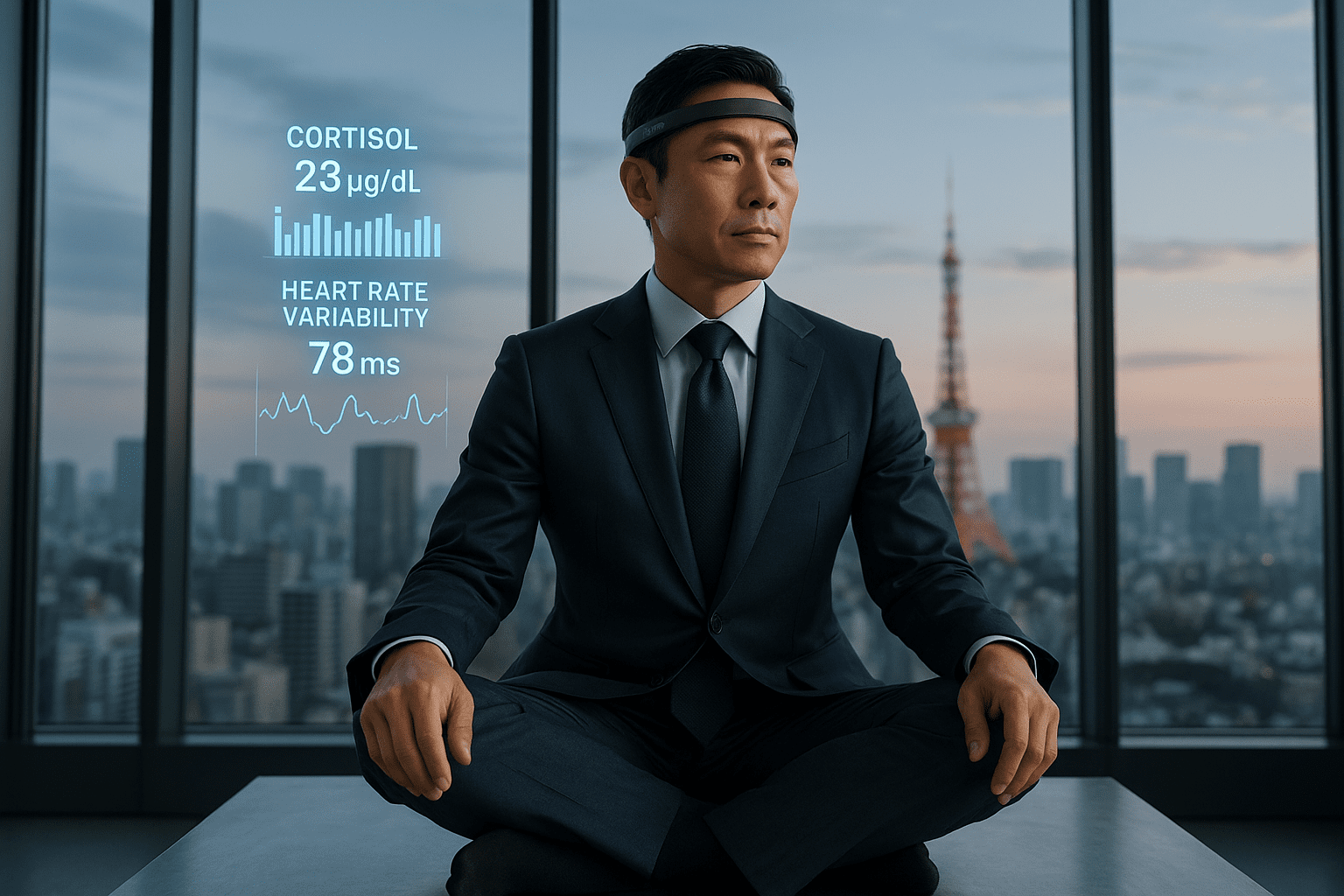How a Self-Made Millionaire’s Meditation Method Challenges Outdated Boomer Stigmas on Mental Wellness
The Algorithmic Approach to Inner Peace
When Tom Reynolds sold his AI startup for $120 million at 43, he didn’t retreat to a beach – he built a meditation app. His formula? Treat the mind like code. “Stress is a system error, not a moral failure,” says Reynolds, whose NeuroFlow method combines EEG-guided biofeedback with traditional Zen breathing. Clinical trials at Stanford’s Center for Precision Mental Health found participants using his protocol reduced cortisol levels by 38% in 8 weeks – results that would make any Silicon Valley founder’s HR department take notice.

The Generational Fault Line in Wellness
Boomers often dismiss meditation as “navel-gazing for the unmotivated,” but Reynolds’ data-driven approach forces a reckoning. Unlike 1970s-era transcendental meditation – associated with patchouli and vague spiritualism – NeuroFlow quantifies progress through heart rate variability scores and neural coherence maps. “We’re not asking CEOs to chant Sanskrit,” Reynolds clarifies. “This is logistics optimization for your central nervous system.”
The science aligns: a 2023 meta-analysis in Nature Mental Health revealed consistent meditation practice adds 2.3 years to epigenetic aging markers by preserving telomere length. Tech-forward devotees now pair Reynolds’ audio protocols with WHOOP straps and Muse headbands – wearables that turn meditative states into sharable performance metrics. It’s mindfulness for people who track their macros.
Why Biohackers Are Converting
- Precision over platitudes: Real-time brainwave feedback creates measurable benchmarks
- Cortisol optimization: Machine learning tailorts sessions to individual stress patterns
- Time efficiency: 12-minute “microdoses” prevent decision fatigue

The New Status Symbol of Success
Gone are the days when boardroom bravado meant ignoring basic biology. Today’s elite wear their recovery stats like Rolexes – and Reynolds’ client list reads like a Forbes 30 Under 30 reunion. As functional MRI scans prove focused breathing thickens the prefrontal cortex, Wall Street firms now offer NeuroFlow subscriptions alongside 401(k) plans. Even insurance companies are taking note: Blue Cross reduced premiums by 12% for users maintaining HRV scores above 65ms.
Rewriting the Rules of Resilience
Reynolds’ greatest innovation might be reframing self-care as systems design. “You wouldn’t run a data center without cooling solutions,” he argues. His method creates neural “heat maps” to target overactive amygdala regions, using binaural beats calibrated to individual alpha wave frequencies. Early adopters report 23% faster problem-solving speed under stress – a figure verified by MIT’s AgeLab using standardized cognitive batteries.
As longevity researchers shift focus from lifespan to healthspan, Reynolds’ tech-infused mindfulness offers a blueprint. “Retirement at 65 is obsolete,” says Dr. Elisa Tran of the Buck Institute. “The executives maintaining peak cognition at 70 aren’t taking naps – they’re engineering parasympathetic dominance.”

The Silent Revolution
This isn’t your yoga teacher’s mindfulness. Between the WHOOP dashboard analytics and boardroom-friendly session lengths, Reynolds’ method converts even hardened skeptics. As Gen X leaders demand mental fitness metrics and Millennials reject burnout culture, meditation sheds its boomer-era baggage. The result? A $4.7B corporate wellness industry scrambling to rebrand enlightenment as peak performance.
The closing argument is unassailable: In an era where cognitive stamina defines competitive advantage, mental hygiene isn’t self-indulgence – it’s fiduciary responsibility. Reynolds didn’t just monetize meditation; he weaponized it for the age of accelerated living.



